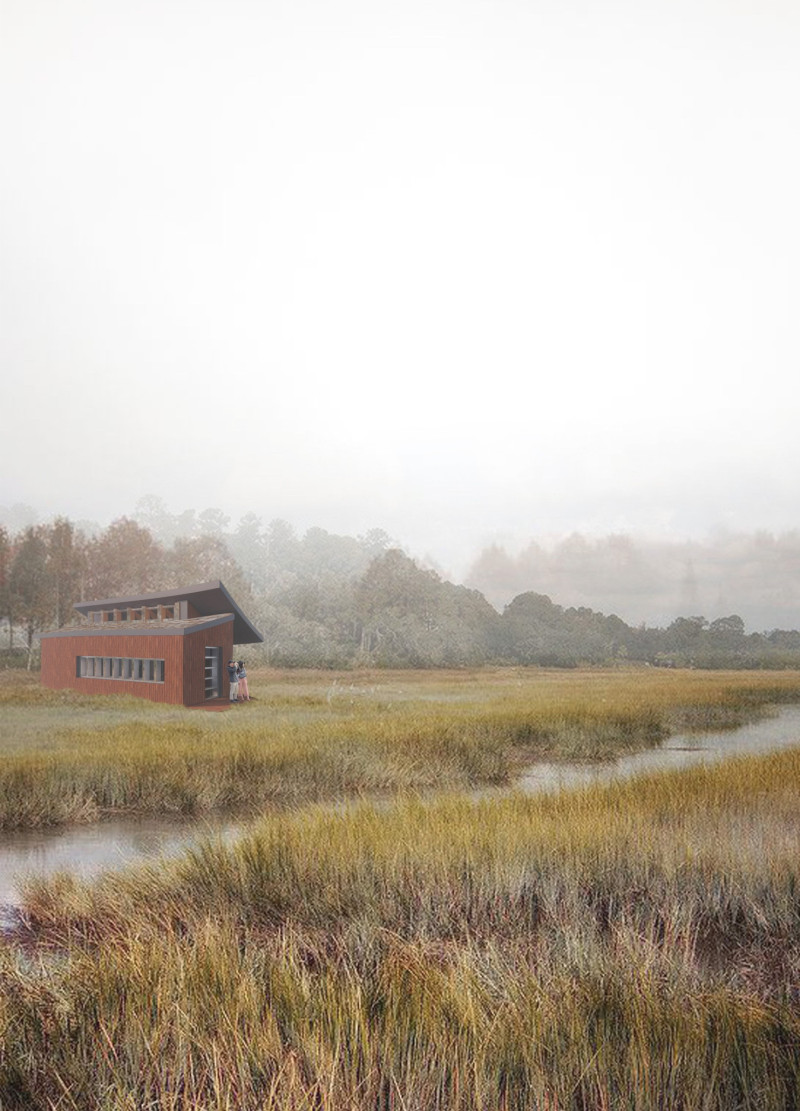5 key facts about this project
The design located in Venta emphasizes a strong connection to the natural environment while focusing on solitude and the pursuit of meaningful experiences. The setting features picturesque meanders and calm caramel beaches, serving as the backdrop for a plan that encourages stepping away from modern distractions. The concept integrates spaces that support both community interactions and individual retreats.
Site Organization
A carefully planned site layout enhances interaction with the landscape and optimizes how spaces are used. A central bonfire platform acts as a gathering area for social activities, surrounded by cabins designed for comfort and functionality. Key amenities such as parking, storage sheds, and designated areas for barbecues and coffee are arranged thoughtfully, promoting an outdoor lifestyle that blends with nature.
Cabin Design
The cabins are designed for visitors interested in experiencing rural life, reflecting traditional architectural styles. Each unit has an entrance that provides a place for luggage and incorporates a sanitary block for convenience. The kitchenette supports self-sufficiency while the living area adapts to the occupant's needs, allowing for personal touches.
Material Utilization
Timber boarding, wooden truss systems, gypsum board, and concrete framework are among the materials used throughout the design. These choices highlight a focus on durability and sustainability. The warmth of the timber aligns with local building traditions, while concrete provides the necessary strength for the structures.
Natural Light and Spatial Experience
Natural light is an essential component that enhances the overall atmosphere of the cabins. The designs are carefully crafted to allow plenty of sunlight, making the interiors bright and inviting throughout the day. The relationship between the natural environment and built forms highlights the area’s beauty while offering a calm retreat for guests. The gentle curve of the cabin roofs complements the landscape, creating a visual connection to the sky above.























































